
Frontiers of Architectural Research
Scope & Guideline
Pioneering Solutions for Contemporary Architectural Challenges
Introduction
Aims and Scopes
- Urban Morphology and Design:
The journal focuses on the study of urban forms, spatial configurations, and their impact on human behavior and environmental performance. It emphasizes methodologies that analyze urban dynamics and the interplay between built environments and social interactions. - Sustainability and Environmental Performance:
A core area of research includes sustainable architectural practices, energy efficiency, and the integration of green technologies in building design. The journal supports studies that explore eco-friendly approaches and the role of architecture in mitigating climate change. - Cultural and Historical Contexts:
Research that investigates the relationship between architecture and cultural identity, heritage conservation, and historical context is a significant focus. The journal encourages submissions that analyze architectural styles and their evolution within specific cultural frameworks. - Technological Integration in Architecture:
The journal emphasizes the role of advanced technologies, such as BIM, machine learning, and computational design, in the architectural process. It highlights innovative practices that enhance design efficiency and sustainability. - Social Impacts of Architecture:
Research exploring the social dimensions of architecture, including how built environments influence community dynamics, public health, and well-being, is a prominent aspect of the journal's scope.
Trending and Emerging
- Smart Cities and Digital Integration:
There is a growing focus on the intersection of architecture and smart technologies, including the use of IoT, data analytics, and digital fabrication in urban design. This trend reflects a shift towards creating responsive and adaptive urban environments. - Biophilic Design and Well-being:
Research on biophilic design principles that enhance human well-being through natural elements in architecture is on the rise. This reflects a broader recognition of the importance of connecting built environments with nature. - Post-Pandemic Urban Resilience:
Emerging themes related to urban resilience and adaptability in response to the COVID-19 pandemic are becoming increasingly prominent. The journal is publishing studies that explore how architecture can contribute to healthier and more resilient urban spaces. - Interdisciplinary Approaches to Architecture:
There is an increasing trend towards interdisciplinary research that combines insights from fields such as neuroscience, sociology, and environmental science to inform architectural practices. This reflects a holistic understanding of the built environment's impact on society. - Sustainable Materials and Construction Practices:
Research focusing on the use of sustainable materials and innovative construction practices is gaining traction. This includes studies on the lifecycle impacts of materials and the potential for reducing carbon footprints in the construction industry.
Declining or Waning
- Traditional Architectural Techniques:
There has been a noticeable decrease in studies focusing solely on traditional building methods and materials. While important, this area seems to be overshadowed by more contemporary approaches that incorporate modern technologies and sustainability. - Historical Preservation without Modern Integration:
Research that addresses historical preservation in isolation from modern architectural practices is declining. There is a growing emphasis on integrating heritage conservation with contemporary design solutions. - Theoretical Frameworks without Empirical Applications:
Papers that propose theoretical frameworks without empirical validation or case studies are becoming less common. The journal is increasingly favoring research that combines theory with practical applications and real-world case studies.
Similar Journals
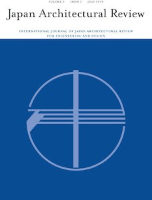
Japan Architectural Review
Championing open access for global architectural discourse.Japan Architectural Review is a premier open-access journal published by WILEY, dedicated to advancing the fields of architecture, environmental engineering, and modeling and simulation. Since its inception, this journal has emerged as a critical platform for disseminating innovative research, offering insights into the latest trends and challenges facing the built environment and sustainability practices. With an impact factor reflecting its growing influence, especially in the Q2 category of Architecture and notable rankings in environmental engineering and modeling disciplines, it serves as an essential resource for researchers, professionals, and students alike. The journal's commitment to open access since 2018 has further enhanced its reach, making high-quality research accessible to a global audience. Spanning an important timeline from 2019 to 2024, the Japan Architectural Review facilitates a collaborative discourse among scholars, encouraging innovative solutions to contemporary architectural challenges.
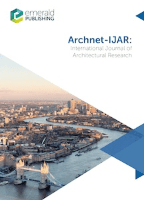
Archnet-IJAR International Journal of Architectural Research
Fostering collaboration in the global architectural community.Archnet-IJAR International Journal of Architectural Research serves as an esteemed platform within the field of architecture and urban studies, published by Emerald Group Publishing Ltd. With an impressive impact reflected through its Q1 category rankings in both Architecture and Urban Studies, this journal highlights cutting-edge research and innovative practices spanning diverse architectural disciplines. The journal focuses on facilitating interdisciplinary dialogues, making it a vital resource for researchers, students, and professionals keen on advancing their understanding of architectural theories and urban design. With its commitment to quality, evidenced by high scores in various Scopus rankings, including a rank of 9th in Visual Arts and Performing Arts, Archnet-IJAR aims to publish work that not only challenges conventional boundaries but also enriches practical applications in the built environment. Its open-access model ensures wider dissemination of knowledge, fostering collaboration and growth within the international architectural community.

Bulletin KNOB
Fostering Insight into Visual and Performing ArtsBulletin KNOB, published by the KONINKLIJKE NEDERLANDSE OUDHEIDKUNDIGE BOND-KNOB, is a reputable Open Access journal that has been disseminating knowledge since 1899, with a continued commitment to making research accessible to all. Based in the Netherlands, this journal provides a platform for scholarly articles that span the fields of Conservation, History, and the Visual Arts and Performing Arts. With its 2023 Scopus rankings placing it in the top quartiles within its category, Bulletin KNOB is recognized for its significant contribution to the advancement of these disciplines. Researchers, professionals, and students alike are encouraged to engage with the journal's diverse content that bridges historical narratives with contemporary practices, fostering a deeper understanding of cultural heritage. The journal’s commitment to excellence is further reflected in its Q3 and Q4 quartile rankings, making it an essential resource for anyone dedicated to the study of the arts and humanities.

IN BO-Ricerche e Progetti per il Territorio la Citta e l Architettura
Exploring the intersection of architecture and social dynamics.IN BO-Ricerche e Progetti per il Territorio la Citta e l Architettura, published by the Department of Architecture at the University of Bologna, serves as a crucial conduit for scholarship in the fields of architecture, urban studies, building and construction, and visual arts. With its commitment to open access since 2008, this journal ensures that innovative research is accessible to a broad audience, fostering collaboration and advancement within these disciplines. Although it currently holds a Q4 ranking in various categories, including Architecture and Urban Studies, it plays a pivotal role in contextualizing contemporary challenges faced in urban development and architectural practice, thereby encouraging critical discourse. The journal publishes original research findings, case studies, and theoretical discussions aimed at enhancing the understanding of the interactions between built environments and social dynamics. Engaging researchers, professionals, and students alike, IN BO is dedicated to not only documenting but also shaping the future of urban and architectural landscapes in Italy and beyond.
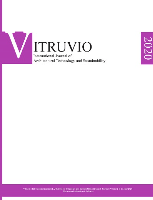
VITRUVIO-International Journal of Architectural Technology and Sustainability
Connecting researchers and practitioners for a greener future.Welcome to the VITRUVIO-International Journal of Architectural Technology and Sustainability, a leading open-access journal published by UNIV POLITECNICA VALENCIA, EDITORIAL UPV since 2015 and based in Spain. With its ISSN 2444-9091, this journal is dedicated to advancing the field of architectural technology and sustainability, providing a vital platform for researchers, professionals, and students alike. The journal has made significant strides in the academic landscape, achieving a Q3 ranking in Architecture and a Q4 ranking in Building and Construction for 2023. It features a diverse range of scholarly articles that explore innovative practices, cutting-edge research, and sustainable solutions in architecture. With a Scopus ranking placing it at #70/189 in Architecture and #161/223 in Building and Construction, it is positioned within the 63rd percentile and 28th percentile respectively, demonstrating its increasing impact in these vital fields. We invite you to engage with our content and contribute to the ongoing discourse around sustainability in architectural practice.

Estudios del Habitat
Innovating the Future of Habitat StudiesEstudios del Habitat is a distinguished academic journal published by Universidad Nacional de La Plata, Facultad de Arquitectura y Urbanismo, dedicated to the exploration of habitat studies, urban planning, and architectural theory. With a commitment to advancing knowledge in the fields of architecture and urbanism, this journal serves as a vital resource for researchers, professionals, and students alike. Although it does not operate under an open access model, the journal seeks to disseminate high-quality research that addresses contemporary challenges in habitat design and urban sustainability. By featuring innovative case studies, critical analyses, and interdisciplinary approaches, Estudios del Habitat facilitates a deeper understanding of the relationship between built environments and their inhabitants, making significant contributions to academic scholarship and practical applications in architecture and urban studies. Don't miss the opportunity to engage with cutting-edge research from Latin America and beyond, where the complexities of spatial dynamics are examined and discussed rigorously.

URBAN MORPHOLOGY
Bridging Research and Practice in Urban SpacesURBAN MORPHOLOGY is a distinguished journal published by the International Seminar on Urban Form, centered on the critical study of urban spaces and their development over time. With an ISSN of 1027-4278, this journal provides a platform for interdisciplinary research, examining the interplay between urban design, architecture, and community dynamics. Although not Open Access, it offers valuable insights within the fields of Archeology and Urban Studies, reflecting its significant impact with rankings in the Q2 and Q3 quartiles as of 2023. It commands respect within the academic community, ranking in the 81st and 79th percentiles in its respective Scopus categories. As it converges from 1997 to 2024, URBAN MORPHOLOGY represents a critical resource for scholars and professionals seeking to deepen their understanding of urban environments. The journal also serves as an essential reference point for evolving discussions surrounding urban planning, sustainability, and heritage conservation, engaging researchers, professionals, and students alike in the vital dynamics of urban studies.

i2 Investigacion e Innovacion en Arquitectura y Territorio
Connecting research and real-world applications in dynamic landscapes.i2 Investigacion e Innovacion en Arquitectura y Territorio is a leading open-access journal published by the University of Alicante, dedicated to advancing research and innovation in the fields of architecture and territorial development. Since its inception in 2013, this journal has aimed to provide a robust platform for scholarly discourse, promoting interdisciplinary approaches that connect academic insights with practical applications in urban planning and environmental design. With its commitment to accessibility, the journal ensures that cutting-edge findings and case studies are readily available to researchers, professionals, and students alike, fostering collaboration and informed decision-making. As the landscape of architecture and geography continues to evolve, the i2 journal stands out as a crucial resource for enhancing knowledge and cultivating innovative practices in these dynamic fields.
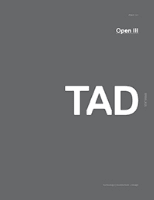
Technology-Architecture + Design
Bridging Technology and Aesthetics in ArchitectureTechnology-Architecture + Design is a pioneering academic journal published by Taylor & Francis Ltd, dedicated to exploring the intersection of technology within architectural and design practices. With an impactful presence in the field since its inception in 2017, the journal has quickly ascended in academic rankings, achieving a Q2 categorization in Architecture and a notable Q1 ranking in Visual Arts and Performing Arts, underscoring its significance in these dynamic areas of study. The journal aims to provide an open platform for innovative research that addresses contemporary challenges in architecture and urban planning, utilizing technological advancements as a central theme. As a vital resource for scholars, practitioners, and students alike, Technology-Architecture + Design publishes high-quality, peer-reviewed articles that contribute to the discourse surrounding sustainable design, digital fabrication, and smart urbanism, making it an essential read for those passionate about the future of built environments.
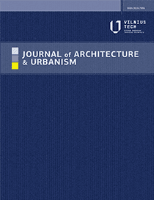
Journal of Architecture and Urbanism
Innovating Architecture for Sustainable CitiesThe Journal of Architecture and Urbanism, published by VILNIUS GEDIMINAS TECH UNIV, stands as a pivotal resource for scholars and practitioners in the fields of architecture and urban studies. Since its inception in 2012, the journal has committed to advancing research and discourse on the design, planning, and functionality of urban environments, reflecting a dedicated focus on contemporary challenges in architecture and urbanism. With an impressive open access model implemented since 2018, it ensures that innovative research is accessible to a global audience, fostering collaboration and knowledge exchange. The journal boasts a commendable reputation, categorized in the Q2 quartile for Architecture and Q3 in both Geography, Planning and Development and Urban Studies as of 2023, while maintaining respectable Scopus rankings. Addressing key themes from sustainable design to socio-economic impacts on urban spaces, the journal aims to inspire new models and solutions that meet the evolving needs of growing urban populations. This is a must-read for anyone engaged in the intersection of architecture and urban development.